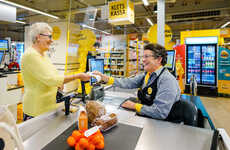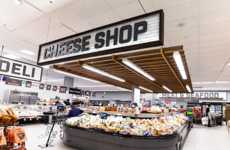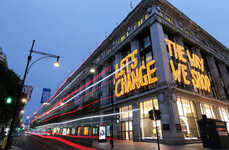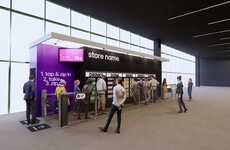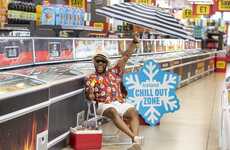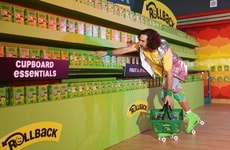
Meadowhall Mall Now Has Slow and Fast Lanes for Slow Walkers
Alyson Wyers — April 28, 2014 — Unique
References: independent & springwise
Sheffield's Meadowhall mall has fashioned an interesting solution to deal with slow walkers. By creating two lanes within the British shopping center, pedestrians can surpass frustrating slow walkers who are known to not only walk at a glacial pace, but also tend to take up the center of a hallway. With clearly marked fushia fast and slow lanes, shoppers have a more effective manner of making their way about the mall.
On busy days, customers and rushing retail employees can be easily held up by dreaded dawdlers, idling groups and window shoppers. Instituting a divided sidewalk will likely also reduce road rage in the mall parking lot later on. This practice was put in place after Meadowhall received a complaint from a disappointed 10 year old.
On busy days, customers and rushing retail employees can be easily held up by dreaded dawdlers, idling groups and window shoppers. Instituting a divided sidewalk will likely also reduce road rage in the mall parking lot later on. This practice was put in place after Meadowhall received a complaint from a disappointed 10 year old.
Trend Themes
1. Pedestrian Lane Segregation - Creating lanes for slow and fast walkers can reduce congestion and improve pedestrian traffic flow in busy areas.
2. Customer Experience Optimization - Providing a more efficient way of navigating malls can improve the customer experience and increase foot traffic for retailers.
3. Elevated Design Solutions - Innovative design solutions, like pedestrian lane segregation, can elevate the experience of public spaces and bring attention to brands that adopt them.
Industry Implications
1. Retail - By optimizing the shopping experience and improving foot traffic, retailers can increase sales and customer loyalty.
2. Architecture and Design - Incorporating innovative design features, such as pedestrian lane segregation, can create more efficient public spaces and contribute to better urban planning.
3. Transportation - This design solution could also be applied to transportation hubs such as airports or train stations, improving traffic flow and reducing congestion.
5.5
Score
Popularity
Activity
Freshness

